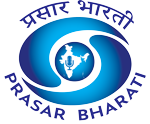Over the past eleven years, India’s middle class has found itself at the centre of the government’s reform agenda. From tax relief measures to simplified compliance norms and pension schemes aimed at long-term security, successive budgets have reflected a steady policy commitment towards easing the financial burden on the salaried segment.
Framed as more than a collection of administrative reforms, the government’s approach has been marked by continuity and responsiveness. Whether in streamlining tax returns, enabling affordable housing, or expanding access to essential services such as healthcare and urban transport, the focus has been on removing procedural barriers and making systems work better for ordinary citizens.
Revised Income Tax Thresholds
A major highlight in the Union Budget 2025–26 was the announcement of a higher income tax exemption limit. Individuals earning up to ₹12 lakh annually will now be exempt from paying income tax, barring certain categories such as capital gains. With the standard deduction raised to ₹75,000, taxpayers with incomes up to ₹12.75 lakh effectively fall outside the tax net.
The move is expected to benefit crores of salaried taxpayers and comes despite a projected revenue loss of close to ₹1 lakh crore. Officials indicated that the measure was guided by a recognition of middle-class pressures and a long-standing demand for greater tax relief.
Simplified Compliance and Rising Voluntary Filings
Over the years, income tax compliance has been progressively simplified. From the introduction of standard deductions to the rollout of a new tax regime in 2020, efforts have focused on reducing documentation and making systems more user-friendly.
Pre-filled income tax return forms—now populated with data such as salary income, interest, and dividends—have played a key role in reducing procedural complexity. As a result, the number of individual return filers has more than doubled in the past decade, rising from 3.91 crore in FY 2013–14 to 9.19 crore in FY 2024–25.
Faceless Assessment and Digital Governance
Introduced in 2019, the faceless e-assessment framework has fundamentally altered the way scrutiny proceedings are conducted. By eliminating physical interface between taxpayers and assessment officers, the system is intended to enhance transparency and reduce discretion.
Under the framework, cases selected for scrutiny are allocated randomly through a centralised system operated by the National e-Assessment Centre in New Delhi. Taxpayers receive notices under Section 143(2) and are required to respond digitally within 15 days. The move from territorial to dynamic jurisdiction has been widely viewed as a structural reform in tax administration.
Policy Continuity and Recognition
Observers note that the measures implemented over the last decade reflect a consistent policy stance rather than isolated interventions. The middle class—often referred to as the backbone of consumption-driven growth—has been acknowledged not just as a tax base, but as a constituency requiring long-term support and recognition.














